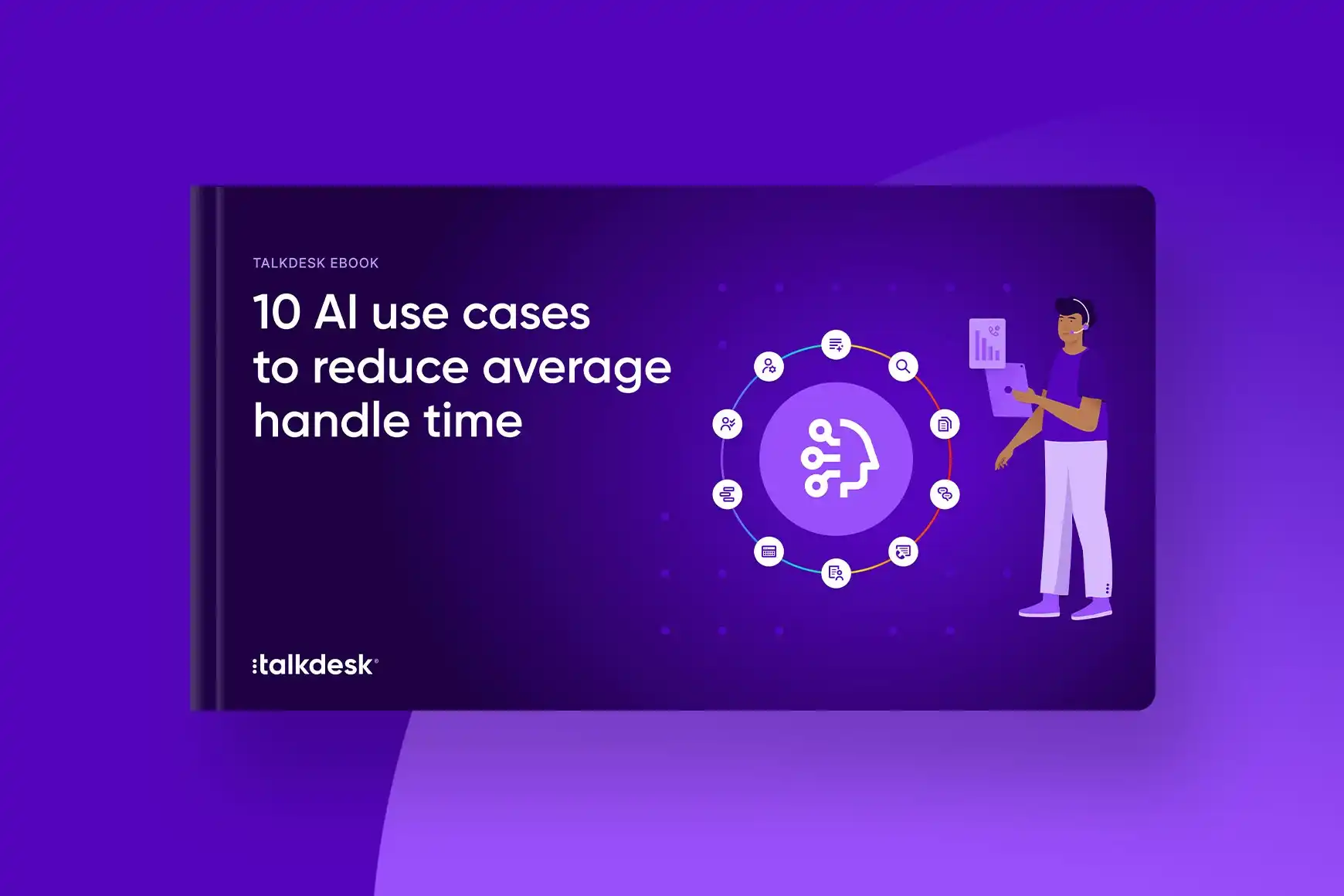How to Handle a Talkative Customer on the Phone

By Shauna Geraghty
0 min read

Talkative customers can be the Achilles’ heel of even the most efficient call centers. They not only take up valuable time with the agent they are speaking with, but also prevent that agent from fielding more calls, increase wait times for other customers and increase the number of callers in the queue. This can negatively impact service level and the company’s bottom line. It is therefore imperative that agents keep chit chat with customers to a minimum so that average handle times are reasonable.
Below are tips, techniques and suggestions on how to decrease handle times with talkative customers. By employing some or all of these techniques, you will see average handle times decrease, wait times decrease and service level improve. All will have a major impact on customer service quality and your bottom line.
Remain in Control of the Conversation
The first step in ensuring talkative customers don’t drive up handle times is to remain in control of the conversation. By leading the customer, you set the tone for how the conversation should proceed and decrease the likelihood that the customer will stray off-topic.
Ask Direct Questions
When you have a talkative customer on the line, don’t ask open –ended questions that require lengthy answers unless absolutely necessary. This will open up the door for them to slip in unrelated topics. Asking direct questions that require yes or no answers will keep the conversation straight and to the point and significantly reduce tangential conversations.
Politely Redirect the Caller
One reason for lengthy handle times is that customer strays off topic. For example, “My wife usually calls, but she’s under the weather. It’s flu season, you know and I…”. The best strategy to employ in this case is polite redirection. For example, “I’m so sorry to hear that your wife is under the weather, sir. I see on your account that you are past due. Is that why you’re calling today?”
It is important to remember to only interrupt if the customer is going off on a tangent that has nothing to do with the call. Never interrupt a customer if they are trying to explain their problem. Interrupting at the wrong time can cause a customer to feel like they need to repeat themselves, which will only lengthen your call time.
Listen Carefully
Understanding a talkative customer’s needs can be challenging – especially if they are long-winded or tangential. However, it is important that you listen carefully when they speak so that you have a comprehensive understanding of their needs. You will then be better equipped to meet their needs, so they don’t have to repeat the same information or call back about the same issue.
Explain Yourself Clearly
Once you have gathered your information, it is important to explain the problem and solution as clearly as possible. This will help you avoid a customer asking you to repeat yourself, saving valuable time.
Here are suggestions on how to convey information as comprehensively as possible:
- Speak at an even pace, and don’t hurry.
- Use common terms that the customer will understand and avoid technical jargon.
- Pause between sentences.
- Practice reciting policy procedures during your downtime so that you can relay them flawlessly.

EBOOK
10 AI use cases to reduce average handle time
Learn how AI tools are being used to reduce average handle time and deliver prompt, accurate answers to customers.
Don’t Sacrifice Quality for Short Handle Times
It is important to remember that talkative customers are chatty for a reason. Often, these customers are lonely and look forward to talking on the phone. Take this into consideration the next time you have a talkative customer on the line and give them time to talk while you work. Then, when you need to obtain more information from them, politely interrupt and redirect the conversation. If you don’t allow them the space to talk a bit, they may become upset or callback. Don’t sacrifice service quality for shorter handle times.
Allowing talkative customers to have the reins on a call, stray on tangents or talk at great lengths about an unrelated topic can drive up handle times. The 7 aforementioned tips, tools and techniques are key to keeping a talkative customer on track and will help to drive down handle times, improve service level and reduce lengthy queues all while enhancing service quality.
Reduce Hold Times
It’s normal to put your customer on hold while you look up their information or check on a policy. In fact, average hold times are 56 seconds no matter how big the company is. However, lengthy hold times can dramatically increase handle times and also leave the customer with more time to think of more things to talk about. Thus, shortening hold times can go a long way to reduce chit chat with customers.
Here are some suggestions to shorten your hold times:
- If at all possible, try to resolve the problem without asking your supervisor for help, since it can take them a few minutes to make it to your station.
- Bookmark answers to commonly asked questions or write the information down on a sticky note and keep the information close by.
- Don’t use hold. Let your talkative customer talk while you search for information. This technique lets him get it out of his system while you get your work done.
Monitor Handle Time and Make Adjustments Accordingly
Knowing when your customers are talking too much is essential to knowing when to rein them in. The average handle time in call centers is 5.97 minutes. If your management hasn’t defined a handle time goal, you can use this as a guideline. Wrap up a call when it is reaching the 6 minute mark and the customer’s needs have been met.








